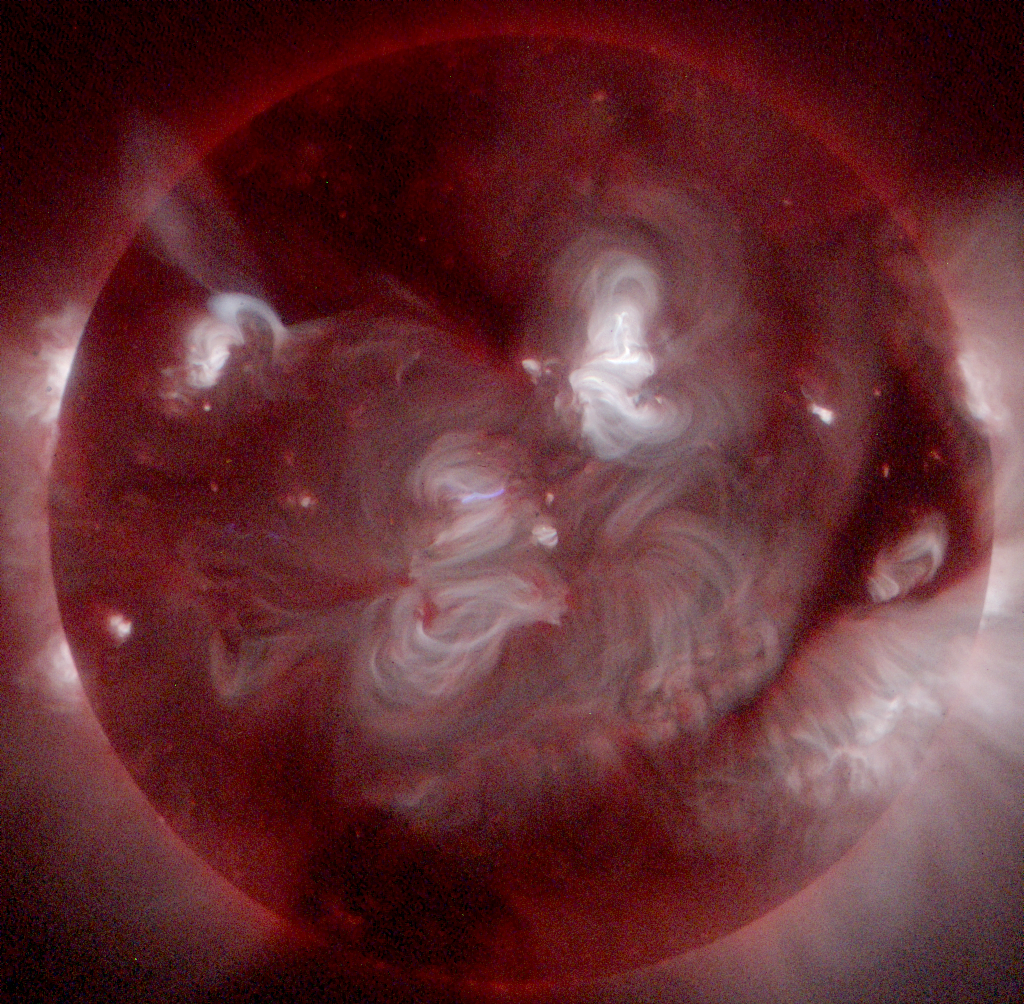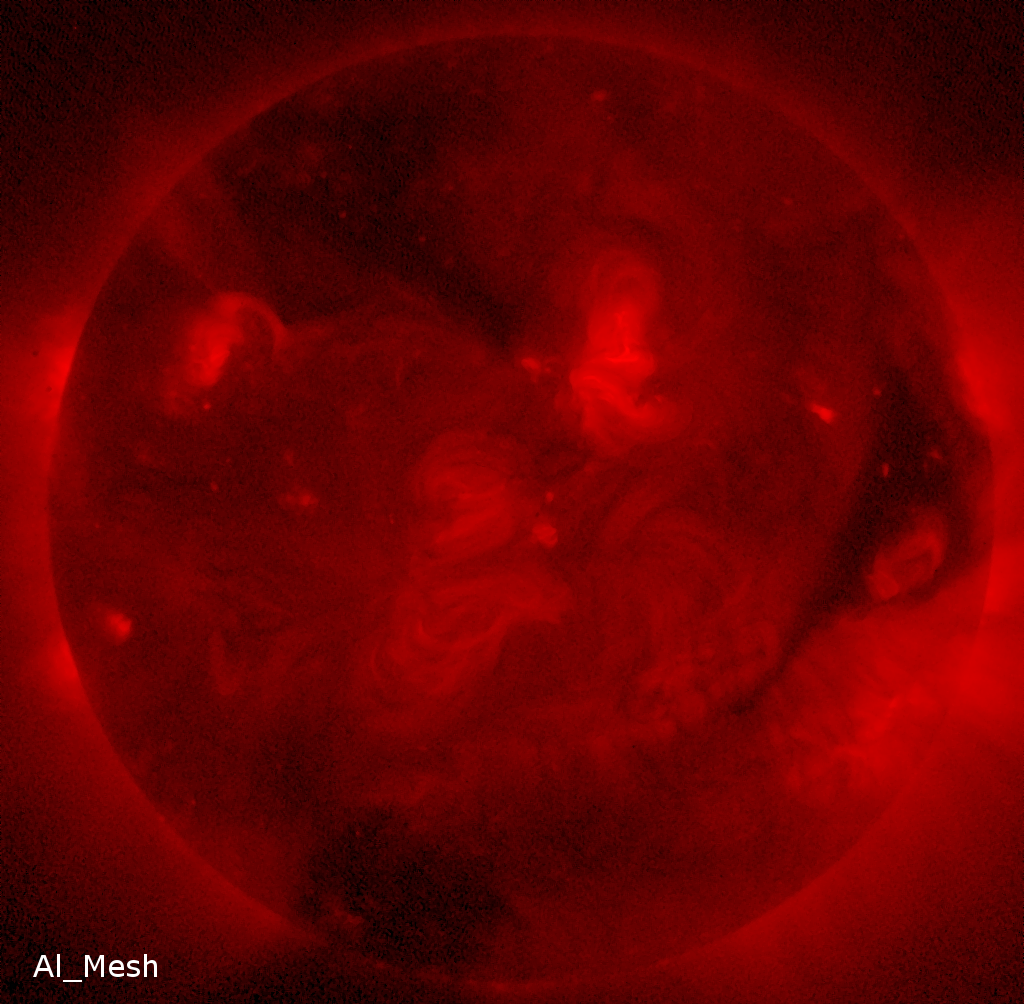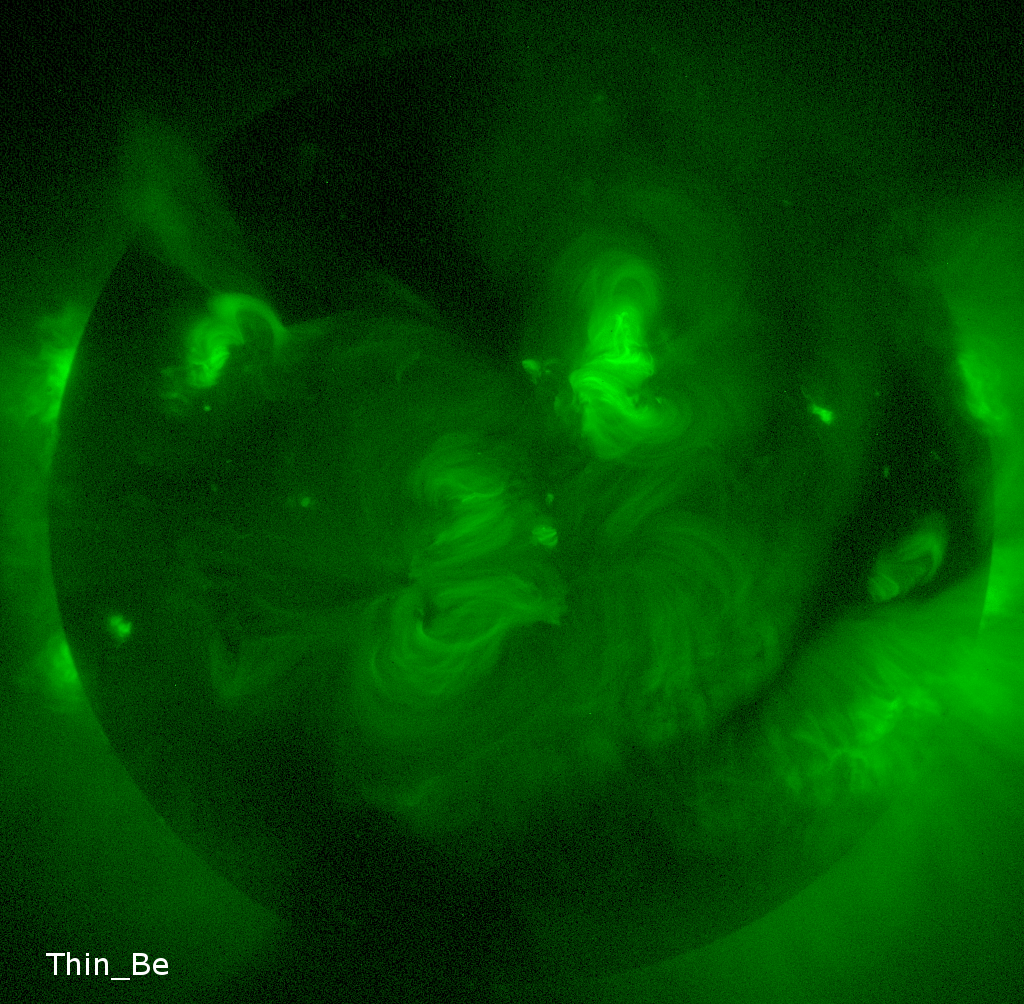





Click for full resolution image.
Colorful Corona
|
Above is a composite image of the sun taken by XRT on 14 February 2015. It was created by combining images taken in three different filters and setting each image to a different color in the RGB color model. The images don't actually represent red, green, or blue light but we can use the way colors combine to make some observations about the sun. Like, where are cool or hot areas in the corona. Of the three images, the filter that lets in most of the light is the Al_mesh filter and it is the red image. The thin_Be filter is slightly thicker and it is the green image. The med_Al filter is the thickest of the three and it is set as the blue image. Since each image has a different exposure time, the green and blue images were re-scaled to match the red images scale. The composite image has some interesting features. We see the sun has a warm, red, glow around the whole disk. This suggests that there is a lot of cool (around 1 million degrees) plasma low in the corona because there is no light in the green or blue images. Red, green, and blue colors combine to make white in the RGB color model. Therefore, we see there are many areas on the the sun that have very hot (tens of millions of degrees) because the light gets through the thickest filter. Near the south pole and the west limb is a coronal hole. Both of these have red glows at the base of the border that gradually turn into white. This suggests that hot plasma is higher up in the corona. You'll also see a beautiful bright blue loop in the upper left part of the disk. This region is brighter in the thick filters (blue and green) than in the thin filter. This is a great indication that magnetic reconnection is happening and hot plasma is being created. What other observations can you make? Keywords: Synoptic, Full Disk Filters: Al_mesh, Thin_be, Med_Al |
(Prepared by Patricia Jibben)
| Back | Archive | Next |